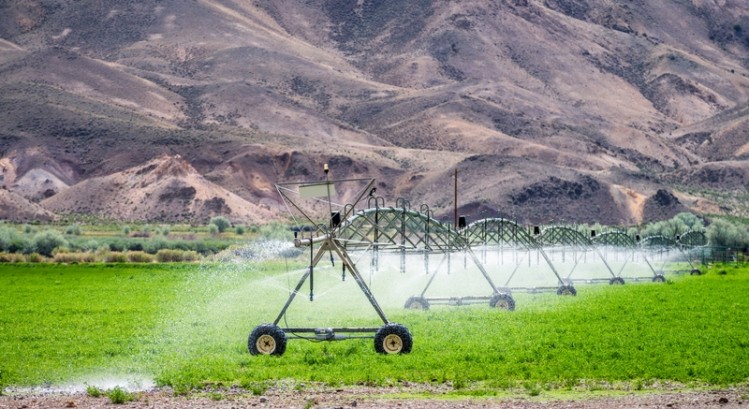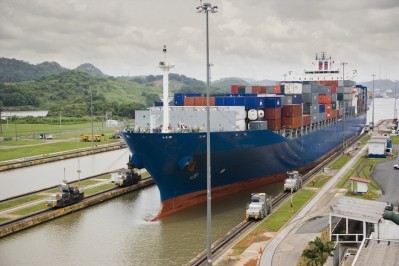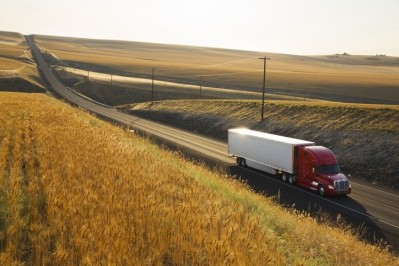FMI: Climate change, transportation & trade relations will test food inflation in 2023

“2022 was, of course, a really, really unusual year for food prices” with inflation driving up the cost of food about 11% over 2021, according to the Consumer Price Index, which is “historically speaking … a really wild number,” Ricky Volpe, an associate professor of agribusiness at Cal Poly, said during a recent briefing on the real drivers of food prices hosted by FMI – The Food Industry Association.
“But,” he added, “since the summer, inflation really has cooled down a lot, and some food prices have actually come down.”
‘Weather is probably the single biggest question mark about what is coming in 2023’
While he acknowledged this is “good news,” he also warned that “weather is probably the single biggest question mark about what is coming in 2023,” and if severe weather events continue to intensify as expected, they will impact the supply chain by limiting transportation and commodity production and by extension exports and imports.
“A lot of analysts are predicting severe weather events in 2023 will continue to affect both major exporters and US producers and manufacturers and will likely continue to have outsized impacts. Droughts, floods, hurricanes, fires, probably something we don’t even see coming right now could impact the supply chain going forward” and potentially cause “inflation to spike back up,” FMI’s vice president of tax, trade, and sustainability Andy Harig agreed during the webinar.
For example, he pointed to the drought along the Mississippi that is causing a “major, major slowdown in barge traffic, which is critical to hauling grain and other crops South both to the Gulf of Mexico and then west to California for export.”
He explained that after the Plains and Midwest experienced the 10th driest September on record, which was followed by an almost equally dry October, the Mississippi water level has dropped dramatically so that barges carrying commodities and essentials cannot pass as they once did.
As a result, the cost to ship grain down the Mississippi has increased more than 2,000% since 2020 – pushing farmers to find alternative transportation options, such as rail or trucking, both of which are already pushed past their limits due to labor limitations and elevated energy costs, Harig explained.
“What we’re seeing here really is a domino effect playing out – a shortage in trucking capacity made the cost of trucking goods more and more expensive throughout the pandemic and beyond that period. But now we have drought, which is increasing demand for trucking services yet again, and the continued truck driver shortage combined with fuel costs … is hampering transportation logistics nationally,” he said.
Climate change tests international relationships, global food supply
Volpe added that the ramifications of climate change go beyond US borders and are reflected in current and potential geo-political strains.
For example, the delays and increased shipping costs due to the dropping water level of the Mississippi are further tightening the grain and oilseed market globally, which was already under duress due to the Russian-Ukraine war.
He added that China experienced “the most severe heatwave in the history of the planet” in 2022, which is “something we need to keep an eye on because if we’re starting to see drought and heatwaves starting to affect China more serious, this is going to have tremendous implications on commodity markets internationally.”
Volpe added that this is further tightening the grain and oilseed market globally, which was already under duress due to the Russian-Ukraine war.
In addition, he noted that China experienced “the most severe heatwave in the history of the planet” in 2022, which is “something we need to keep an eye on because if we’re starting to see drought and heatwaves starting to affect China more serious, this is going to have tremendous implications on commodity markets internationally.”
He added that this is a growing problem for which “there’s really no short-term solution,” but to which “the food supply chain domestically and globally has to start adapting, and it has to start adapting quickly.”
Strategies for future-proofing the food system
One possible solution that Volpe says he sees as promising is vertical farming and a transition towards controlled environment agriculture, which by farming indoors with limited by recirculated inputs allows for “greatly broadening the geographic scope of production.”
He explained: “We don’ have to grow all these crops in California, if we are growing them inside and we’re controlling the environment.”
He acknowledged that the startup costs for indoor farming are high, but he says he sees “enormous potential for collaboration, integration and investment, most of it coming from downstream companies, including retailers and wholesalers and manufacturers who want to ensure the stability of their product and are making investments in CEA, in vertical agriculture.”
He added: “Those are the sorts of major direction that I see the food supply chain moving in terms of adapting and future-proofing and being ready for the next shock, the next surprise, the next disturbance.”
While these threats are significant and a bit unpredictable, to the extent possible, they are already baked into the US Department of Agriculture’s forecasts for food production in 2023, said Volpe.
Looking at those forecasts and knowing that a slight shift could cause an outsized negative impact, Volpe said he doesn’t think the industry is on track for a “normal year,” but he also predicted that – again unless something goes wrong – “we’re not on track for anything resembling what we saw in 2022.”
Rather, he predicts food prices will continue to increase around 3-4% -- but emphasized industry should think long term and brace for the worst to be safe rather than sorry.












